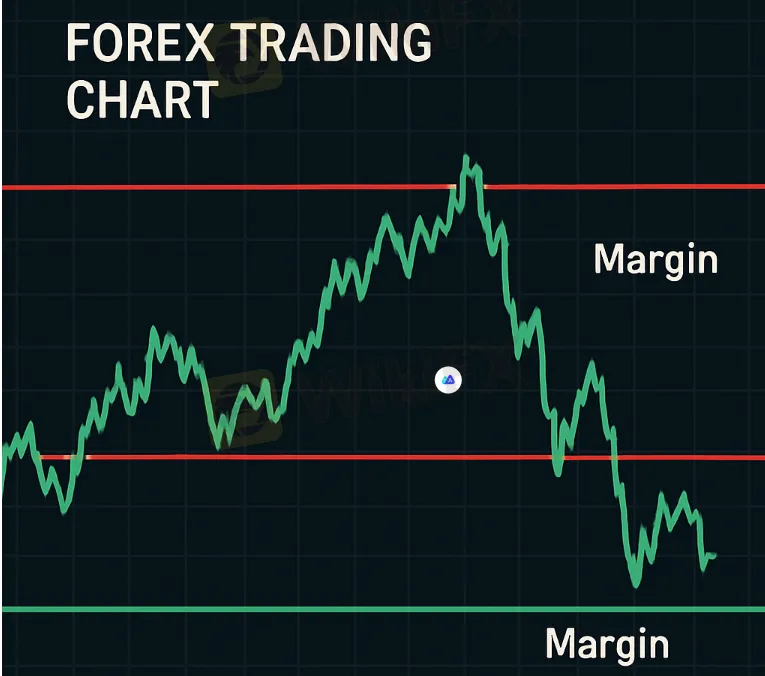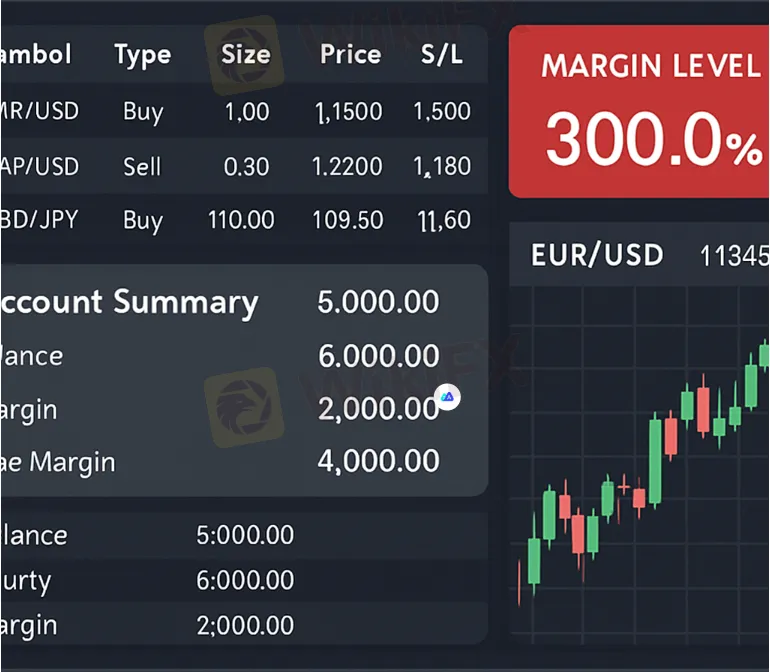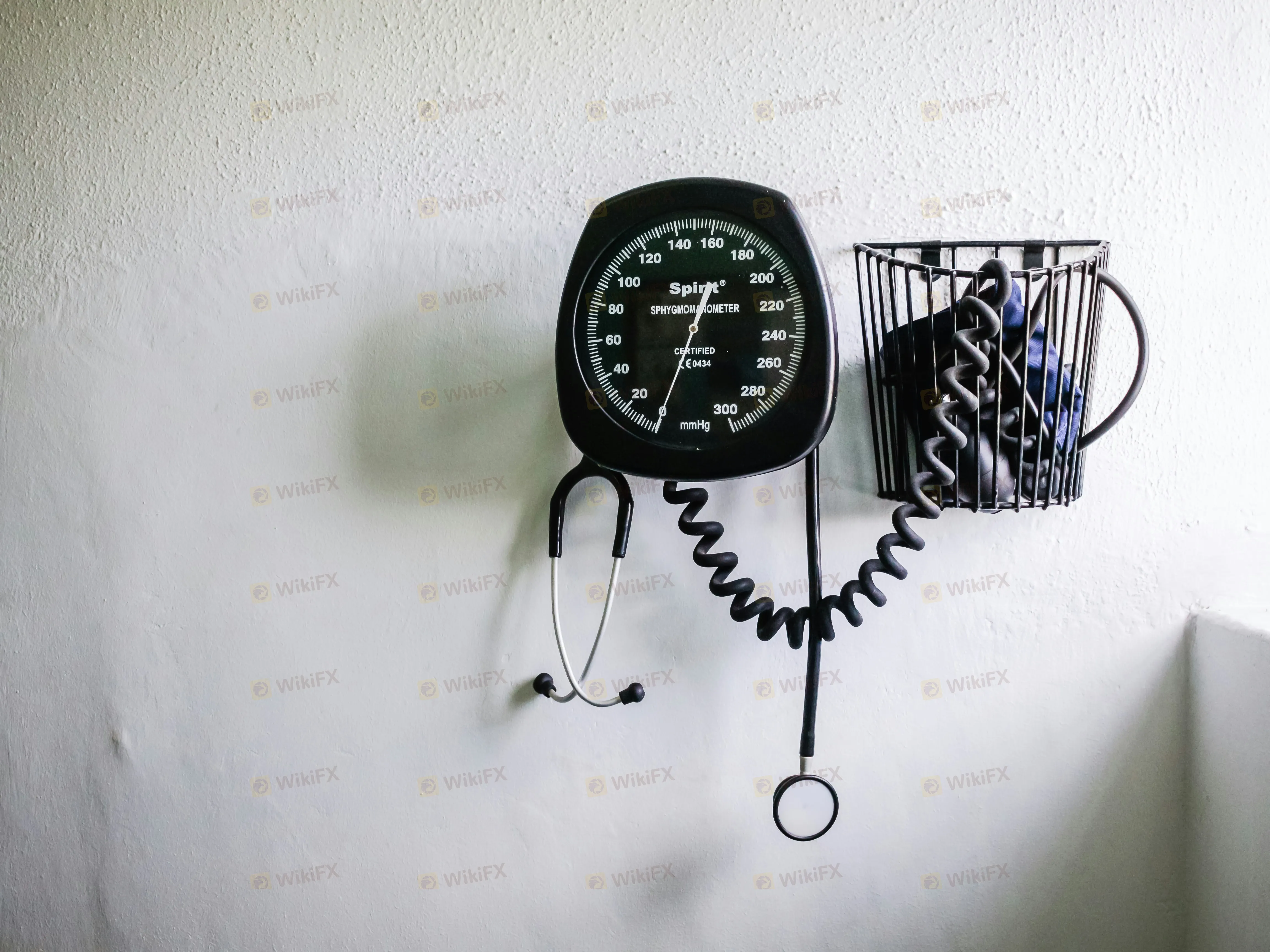Abstract:Discover the critical role of Margin Level in Forex Trading and learn how to use it for effective risk management and leverage control. Stay informed to optimize your trading strategy.

Understanding Margin Level in Forex Trading
Understanding key concepts of a dynamic and complex forex trading market is crucial for success. One such concept is the Margin Level in Forex.
Margin Level is a vital metric for traders. It indicates the health of a trading account. A higher margin level means more available equity.
Forex trading involves leverage. This allows traders to control larger positions with smaller funds. But it also increases risk.
Margin Level helps manage this risk. It is expressed as a percentage. Calculating it involves dividing equity by used margin.
A low margin level can lead to a margin call. This is a broker's request for additional funds to prevent account depletion.
Free Margin is another important term. It refers to the equity available to open new positions.
Understanding these terms is essential.
Forex traders must monitor their margin levels so that they can make informed trading decisions and effectively manage risks.
What is Margin in Forex Trading?
In Forex trading, the term “margin” often confuses newcomers. At its core, margin refers to the collateral held by a broker. This collateral is required to open and maintain trading positions.
Margin serves as a safety net for brokers. It ensures that traders can honor their positions in volatile markets. This protection is essential as forex markets can shift rapidly.
By opening a position, a specific portion of your account balance is set aside. This set-aside is the “used margin.” It acts as a guarantee for trade.
Here's a simplified look at what “margin” entails in forex:
- Opening Positions: Requires a portion of your account balance.
- Leverage: Controls larger trades with less capital.
- Safety Net: Prevents brokers from excessive losses.
Forex margin is not a fee or a transaction cost. Instead, it's part of your equity locked to support your current trades. Without margin, utilizing leverage would be impossible.

Understanding margin is crucial as it forms the foundation of risk and leverage in trading. Misunderstanding it can lead to significant trading errors. Proper knowledge aids in effective strategy execution and overall trading success.
What is Margin Level in Forex?
Margin Level in Forex is a vital concept for traders. It acts as a financial indicator of your account's health. This metric is shown as a percentage and helps gauge your trading capacity.
Calculating margin level involves a simple equation. Divide your equity by the used margin and then multiply by 100. A higher percentage indicates a better buffer against losses.
A healthy margin level means you have more leeway. With increased available equity, you can handle market fluctuations effectively. It ensures that your positions remain open even under adverse conditions.
Here's what the margin level provides to traders:
- Account Status: Shows the risk exposure.
- Trade Capability: Influences position size.
- Risk Indicator: Alerts for potential margin calls.
Recognizing the margin level's significance aids in risk management. It prevents unexpected position closures and maintains your account's integrity. For any Forex trader, monitoring this number is essential.

Neglecting the margin level can lead to sudden margin calls. These calls demand additional funds, straining financial stability. Consistent monitoring keeps traders informed and prepared.
Margin Level vs. Free Margin vs. Used Margin
Understanding the differences between margin level, free margin, and used margin is crucial for forex traders. Each term serves a distinct role in the trading accounts financial health.
Margin Level, expressed as a percentage, measures the relationship between your equity and the used margin. This number provides insights into how much of your available funds are being utilized to maintain open positions.
Free Margin, on the other hand, refers to the amount of equity available for opening new trades. It is the remaining balance after accounting for open positions. Free margin indicates the buffer you have to secure additional market opportunities.
Used Margin is the sum of all margin requirements for your open trades. It is the locked-in amount that guarantees your current positions.
Here's a simple breakdown to differentiate these terms:
- Margin Level: Health indicator (equity/used margin × 100).
- Free Margin: Funds available for new trades.
- Used Margin: The locked amount for existing trades.
By understanding these concepts, you can manage risks more effectively and make informed trading decisions. Monitoring these metrics regularly ensures that your account remains resilient against market volatility.
How to Calculate Margin Level in Forex
Calculating the margin level in forex is vital for maintaining a healthy trading account. This calculation helps you understand your account's leverage situation.
The formula for margin level is straightforward: divide your equity by the used margin, and multiply the result by 100. With this, you get the margin level in percentage.
Equity is the total balance of your trading account, including unrealized profits or losses from open positions. Used margin, as previously explained, is the amount locked for your current trades.
Here's a step-by-step guide to help calculate:
- Identify Equity: Check your account balance with open positions.
- Determine Used Margin: Sum the margin requirements for all your trades.
- Apply Formula: Use the formula ( \text{Margin Level} = \left(\frac{\text{Equity}}{\text{Used Margin}}\right) \times 100 ).
This calculation is essential to prevent margin calls. Keeping a regular check on your margin level helps manage trading risks better.
Being proactive with these calculations allows traders to plan effectively, avoiding unexpected account issues.

Margin Level Calculation Example
Lets look at a practical example to clarify this calculation. Suppose your forex account has an equity of $10,000.
If your used margin, which is the locked-in amount for open trades, stands at $1,000, this is how you calculate the margin level:
Divide the equity by the used margin to get 10. Multiply by 100 to convert it into a percentage, resulting in a margin level of 1000%.
Heres a recap of the calculations:
- Equity: $10,000
- Used Margin: $1,000
- Margin Level Calculation: (\left(\frac{10,000}{1,000}\right) \times 100 = 1000%)
This percentage indicates a well-buffered account, offering ample room to withstand market fluctuations. It highlights the importance of knowing your margin level for improved forex trading strategies.
What is Margin Level in MetaTrader 4?
MetaTrader 4, a popular trading platform, prominently displays the margin level to assist traders. It provides a clear overview of your account's leverage situation.
In MetaTrader 4, the margin level is calculated automatically. You can view it in the “Trade” tab of the platform window. This feature helps traders easily monitor their financial status.
MetaTrader 4 simplifies tracking with real-time updates, ensuring you are aware of potential margin issues. Here's what you can do within the platform:
- Monitor Account Status: Keep an eye on margin level in the “Trade” tab.
- Receive Alerts: Set up notifications for critical margin levels.
- Manage Trades Effectively: Use tools to maintain a healthy account balance.
Understanding these aspects ensures proactive risk management, minimizing the scope for unplanned margin calls.

The Role of Margin Level in Forex Risk Management
Effective risk management is the backbone of successful forex trading. Margin level plays a vital role in this process. A healthy margin level ensures that traders can sustain their positions amid volatile market conditions.
Understanding margin level is critical to avoid unnecessary risks and manage potential losses. Traders rely on it to gauge the account's safety and resilience. Maintaining an optimal margin level prevents scenarios where unexpected market shifts lead to margin calls.
Traders should regularly assess their margin level so that they can adjust positions as necessary. Being proactive can make the difference between keeping an account afloat and facing liquidation. This involves carefully analyzing the available margin.
Here are some key actions to consider:
- Regularly monitor your margin level for sudden changes.
- Set threshold alerts to get notified before reaching critical levels.
- Adjust trading positions to maintain a safe margin level.
Balancing leverage and equity smartly can reduce financial exposure and enhance trading stability. Thus, understanding and managing margin level is indispensable for long-term trading success.

What is a Margin Call in Forex?
A margin call is a broker's demand for more funds when your account falls below the required level. It signals the need for additional margin to maintain open positions.
Triggers for margin calls vary but usually involve falling below a set margin threshold. When a call occurs, immediate action is necessary. Failure to do so can lead to automatic position closures.
Trading with high leverage increases the probability of receiving a margin call. This is due to volatile market conditions that rapidly deplete available margin.
To understand margin calls better, consider these essential points:
- They act as a warning of potential liquidation.
- Require swift action, often adding more funds or reducing open positions.
- Signal inadequate margin levels, requiring adjustment for account sustainability.
Knowing how to manage leverage effectively reduces the risk of margin calls. This keeps your trading strategy resilient during unpredictable market phases.

How to Avoid Margin Calls
Avoiding margin calls requires strategic planning and vigilant monitoring. Here are several ways to steer clear of them:
- Regularly check your margin level. Know your broker's margin requirements.
- Use stop-loss orders to limit losses during abrupt market changes.
- Diversify trading to spread risks across multiple positions.
Efficient risk management reduces the likelihood of receiving margin calls. Ensure your trading strategy includes adequate measures and careful planning.
The Impact of Leverage on Margin Level
Leverage significantly impacts the margin level in forex trading. It allows traders to control large positions with minimal investment. While this can boost potential profits, it also amplifies risks.
A higher leverage ratio reduces the required margin. This leaves more free margin available for additional trades. However, high leverage also means that market movements can quickly deplete your margin level.
Understanding leverage's role in margin calculation is vital for traders. The relationship between leverage and margin can influence decision-making. This is because available margin determines trading capacity.
Consider how leverage affects your trading:
- High leverage: Low margin requirement, high risk.
- Low leverage: High margin requirement, low risk.
- Balanced leverage: Optimum risk and potential reward.
This dynamic highlights the importance of cautious leverage use in forex. By managing leverage wisely, traders can maintain a healthy margin level and mitigate excessive risks.
Best Practices for Managing Margin Level in Forex Trading
Successful forex traders prioritize margin management. Keeping a healthy margin level is crucial for risk control and account longevity. Implementing best practices helps in maintaining this balance.
Firstly, avoid over-leveraging. Excessive leverage can rapidly deplete your trading account. Instead, opt for balanced leverage ratios that align with your risk tolerance.
Moreover, regularly monitor your account status. Be proactive about your margin level to prevent unexpected margin calls. Utilize tools and alerts provided by your trading platform.
Consider these tips for effective margin management:
- Use stop-loss orders to protect positions.
- Diversify your portfolio to spread risk.
- Maintain a buffer of free margin for volatile market conditions.
By adhering to these practices, traders can safeguard their accounts. Proper margin management reduces risks and enhances trading performance.

Common Mistakes to Avoid with Forex Margin
Mismanaging forex margin can lead to significant losses. Traders often repeat common mistakes that jeopardize their accounts.
One frequent error is ignoring the importance of margin levels. Some traders focus solely on potential profits without considering margin requirements.
Additionally, using too much leverage is dangerous. High leverage amplifies losses just as quickly as profits. Therefore, understanding the impact of leverage on the margin is crucial.
To avoid these pitfalls, consider the following:
- Always check margin levels before trading.
- Avoid maxing out leverage capacity.
- Educate yourself on broker-specific margin policies.
By avoiding these mistakes, traders can enhance their forex trading journey. Staying informed and cautious is key to success.
Frequently Asked Questions about Margin Level in Forex
What is a good margin level in forex?
A good margin level offers safety. Generally, a level above 100% is considered stable, showing more equity than used margin.
How can I monitor my margin level?
Most trading platforms, like MetaTrader 4, display your margin level directly. Regular checks can prevent issues like margin calls.
What triggers a margin call?
Margin calls occur when your margin level falls below a set threshold. This can happen if the market moves unfavorably against your positions.
Is leverage related to margin level?
Yes, leverage affects margin. High leverage can reduce your margin level quickly, increasing risks.
Why is understanding margin level important?
Knowledge of margin level aids in effective forex risk management. It ensures you maintain healthy trading capacity and avoid unexpected position closures.
Conclusion: Why Understanding Margin Level is Essential for Forex Traders
Grasping the concept of margin level is crucial for forex success. It provides insights into trading limits and potential risks. Without this understanding, traders may face unexpected challenges.
Keeping a close watch on your margin level helps maintain financial stability. It enables informed decision-making, allowing you to react swiftly to market changes. Overlooking margin levels can lead to damaging consequences.
Ultimately, a sound knowledge of margin level empowers traders. It enhances risk management strategies and helps achieve long-term trading goals. Make margin level monitoring a fundamental part of your trading routine.



















